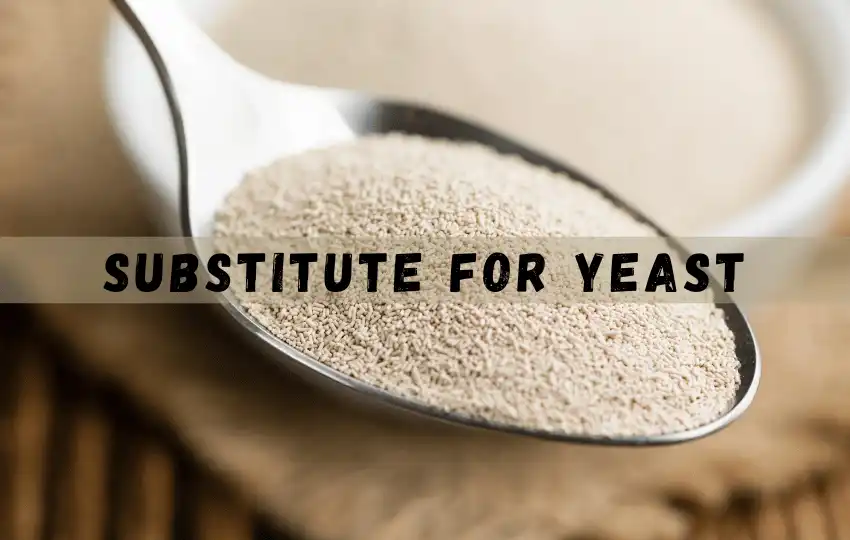Every seasoned home cook knows how essential yeast is to any recipe that requires the use of leavening agents.
Unfortunately, yeast can be quite tricky to find in the market, especially considering the current global pandemic situation.
No need to worry, though, as there are many substitutes for yeast that can be used instead.
As an experienced home cook and chef, I have delved into exploring yeast-free recipes, and I am happy to share 16 ideal substitutes for yeast with simple ratios and instructions on how to use them.
In short, " What can I use instead of yeast?" Baking Powder, Baking Soda, Club Soda, Self-Rising Flour, Sour Cream, Yogurt, Beer, Kefir, Sourdough Starter, Cream of Tartar, Sourdough Starter, Brewer's Yeast and many more.
What is yeast, and what does yeast taste like?
Yeast is a single-celled organism that belongs to the fungi family.
It’s used widely in baking and brewing because of its ability to convert sugars into alcohol and carbon dioxide gas, which helps dough rise.
Yeast generally has a slightly sweet taste with an earthy or nutty flavor.
Some people describe it as having hints of clove or cinnamon, while others may taste fruit tones like banana or pear.
The flavor intensity will vary depending on the type of yeast being used.
Uses of yeast
Yeast is a key ingredient in many dishes, both savory and sweet. It plays an essential role in baking, as it helps to leaven dough, producing light and fluffy cakes, bread and pastries.
In addition to giving body and texture to baked goods, yeast also contributes subtle flavor notes and an appetizing aroma.
Yeast can also be used for making beer, wine, hard cider, sake, kombucha and other fermented beverages.
For savory dishes, yeast is used to make stocks that are full of flavor; marinated meats that are juicy and tender; sauces that have complex flavors; and soups with a rich broth.
Yeast extracts such as Marmite or Vegemite are often added to savory foods to enhance their flavor.
A tablespoon of yeast in a dish can add umami—a fifth taste component—which helps bring out the complexity of flavors in food.
Yeast also has nutritional benefits; it contains several B vitamins (such as niacin), minerals (such as iron) and some antioxidants, which can help boost immunity.
Many plant-based products such as soy sauce or tempeh contain added yeast for its nutritional benefits as well as its flavor contributions.
Where to buy yeast?
If you are looking for where to buy yeast, there are a few different places you can go. Many specialty food stores carry it, as do some international grocery stores.
You can also order online from many retailers that provide a variety of diverse flavors and types of yeast.
Best Substitutes for yeast
1. Baking Powder – a good Substitute for yeast
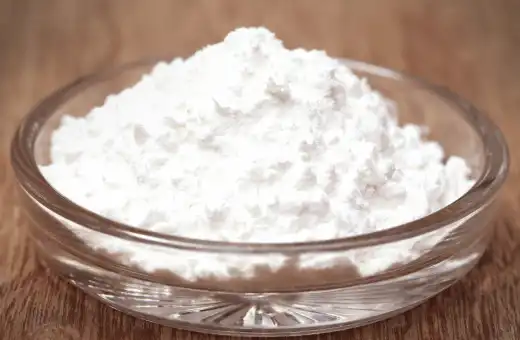
Baking powder is a commonly known substitute for yeast. It is a leavening agent made from cream of tartar and baking soda with added cornstarch to prevent clumping.
Ratio or measurement: The ratio for baking powder is 1 tablespoon of baking powder for every 1 cup of flour.
It is important to remember that baking powder works best for quick bread and pastry recipes that do not require a long rising period.
2. Baking Soda
Baking soda is another excellent alternative for yeast. It is an alkaline compound that reacts with acidic ingredients to create carbon dioxide, which then leavens the dough.
Ratio or measurement: The ratio for baking soda is 1/4 teaspoon for every 1 cup of flour.
It is essential to add an acidic ingredient like vinegar or buttermilk to activate the baking soda.
3. Try Club Soda to replace yeast
Club soda can also be an alternative to yeast. It is carbonated water containing bicarbonate and carbonate ions, which helps to raise the dough.
Ratio or measurement: The ratio for club soda is one cup of club soda for every two cups of flour.
4. Self-Rising Flour
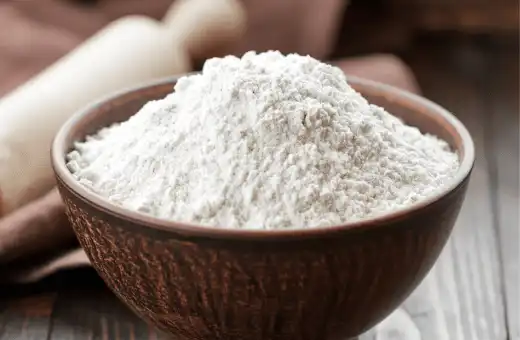
Self-rising flour is a store-bought alternative to yeast.
It is a flour that has been pre-mixed with baking powder and salt, making it an ideal choice for recipes that require a quick rise, such as biscuits, pancakes, and waffles.
Ratio or measurement: The ratio for self-rising flour is one cup of self-rising flour for every 1 cup of regular flour.
5. Sour Cream – a great alternative for yeast
Sour cream is a tangy alternative to yeast that adds a unique flavor to the dough. The acid content in sour cream causes the dough to rise naturally.
Ratio or measurement: The ratio for sour cream is one cup of sour cream for every three cups of flour.
6. Yogurt
Yogurt is another tangy alternative to yeast that provides a distinct flavor. The bacteria in yogurt naturally produce acid, which activates the leavening agents.
Ratio or measurement: The ratio for yogurt is one cup of yogurt for every three cups of flour.
7. You can use Beer instead of yeast
Beer can be a flavorful alternative to yeast in bread making. The yeast present in the beer helps to leaven the dough.
Ratio or measurement: The ratio for beer is one cup of beer for every three cups of flour.
8. Kefir
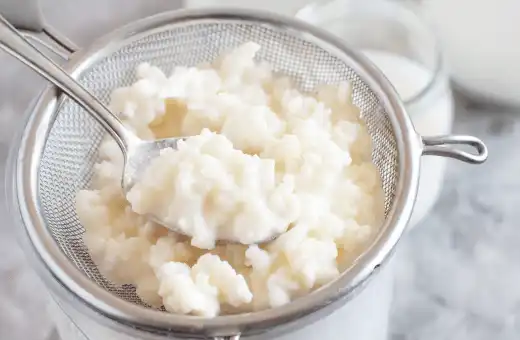
Kefir is a fermented dairy by-product that can be an alternative to yeast. Like yogurt, it contains live bacteria that activate the dough.
Ratio or measurement: The ratio for kefir is one cup of kefir for every three cups of flour.
9. Sourdough Starter – a decent replacement for yeast
Sourdough starter is another substitute for yeast that provides a distinct flavor.
It is a naturally occurring combination of flour and water that has been fermented, creating a stable culture of wild yeast and bacteria.
Ratio or measurement: The ratio for a sourdough starter is 1 cup of starter for every 3 cups of flour.
10. Cream of Tartar
Cream of tartar is an acid substitute used in baking powder. It can also be used as a baking ingredient for beer bread.
Ratio or measurement: The ratio for the cream of tartar is 1/2 teaspoon for every 1 cup of flour.
It is essential to add baking soda to activate the cream of tartar.
11. Sourdough Starter – similar taste to yeast
Sourdough starter is a natural yeast substitute that is ideal for bread baking; it takes longer than other substitutes but is worth the wait.
Ratio or measurement: Mix a cup of flour and ½ cup of water, leave it in a warm spot for a day or two, and then feed the mixture every day with more flour and water.
The mixture should be ready to use in baking after about five days.
12. Brewer’s Yeast
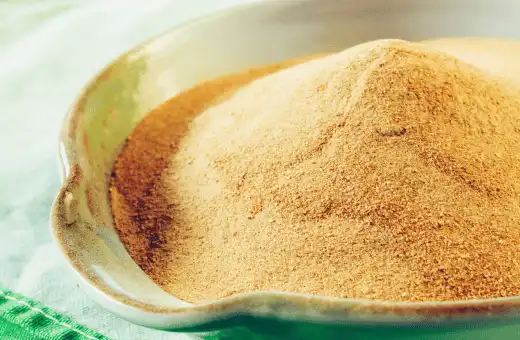
Brewer’s yeast is typically used in making beer, but it works perfectly in making bread and other baked goods.
Ratio or measurement: Substitute it for yeast by using four teaspoons of brewer's yeast for one teaspoon of active dry yeast.
13. Yeast Extract – a tasty Substitute for yeast
Yeast extract contains a lot of unique flavors, making it great for bread, soups, and stews.
Ratio or measurement: To use it in place of yeast, dissolve 1-2 teaspoons of yeast extract in warm water, and follow the recipe as usual.
14. Buttermilk
Buttermilk is more acidic than ordinary milk and works well as a substitute for yeast in baking recipes that require milk and yeast.
Ratio or measurement: To use it as a substitution, use 1 cup of buttermilk for every 1 cup of milk in the recipe and lower the amount of baking powder or baking soda by one-third.
15. Lemon Juice – gives you a similar taste to yeast
Lemon juice is acidic and an excellent replacement for yeast. It’s an ideal substitute for fluffy pancakes and other baked goods.
Ratio or measurement: Use half of the amount of lemon juice required for yeast, so if the recipe needs 1 tablespoon of yeast, then add a half tablespoon of lemon juice instead.
16. Honey

Honey is a natural sweetener and a perfect substitute for yeast.
Ratio or measurement: When substituting yeast for honey, add two tablespoons of honey for every cup of flour used in the recipe.
Tips on How to Choose the Most Suitable Substitution Option for Yeast
When choosing a substitution option for yeast, consider the following tips:
1. Baking Powder: If you need a leavening agent for your recipe, baking powder can be a suitable substitution for yeast.
However, keep in mind that it will not provide the same rise and flavor as yeast. Use approximately 1 teaspoon of baking powder for each 1 cup of flour in your recipe.
2. Baking Soda and Acidic Ingredients: Baking soda blended with an acidic ingredient like lemon juice or vinegar can create a leavening effect similar to yeast.
Use one-fourth teaspoon of baking soda and half a teaspoon of acid for every 1 cup of flour in your recipe.
3. Sourdough Starter: If you’re looking for a natural fermentation substitute, consider using a sourdough starter.
The sourdough starter contains wild yeast that can provide leavening and flavor to your baked goods.
Adjust your recipe to include the appropriate amount of sourdough starter as a replacement for yeast.
4. Instant Yeast: If you have active dry yeast in your recipe but only have instant yeast on hand, you can substitute them in equal amounts.
However, keep in mind that instant yeast may require less proofing time.
5. Non-Yeast Bread: If you’re open to exploring bread alternatives, consider making quick bread like banana bread or soda bread that doesn’t require yeast at all.
These breads rely on baking powder or baking soda for leavening.
Conclusion on Substitute for Yeast
These 16 yeast substitutes should make your baking experience more enjoyable and stress-free.
Keep in mind that you must follow the measurements precisely, as some substitutes require more or less quantity than yeast.
With the right yeast substitute and method, you’ll be able to create tasty baked goods with ease, regardless of the current market conditions or whether you just forgot to stock up on some yeast.
So keep experimenting and enjoy the wonder of baking without yeast!
FAQs on Substitute for yeast
Q1. What is similar to yeast
Baking soda and powder are both leavening agents that produce carbon dioxide gas when exposed to moisture and heat, causing baked goods to rise.
They work similarly to yeast, just without the long wait times for doughs or batters to prove. Baking powder contains baking soda, whereas yeast is a living microorganism.
All three can be used interchangeably in different recipes but typically serve different purposes in baking.
Q2. Can I use baking powder rather than yeast for bread?
Yes, it is possible to use baking powder instead of yeast for bread. Baking powder is a combination of baking soda and an acid to neutralize it, such as a cream of tartar.
It can be used as a leavening agent in place of yeast, resulting in a more dense and chewy texture.
When using baking powder, the dough or batter should be mixed quickly to prevent over-activation of the leavening process and then baked immediately.
Baking powder bread usually has a slightly coarser, less even crumb than those made with yeast because the carbon dioxide bubbles are larger and escape from the dough quicker.
Additionally, the flavor will be different as well since there won’t be any fermentation from the yeast as with traditional bread.
Q3. How to use baking powder instead of yeast?
Baking powder is a chemical leavening agent often used as an alternative to yeast in recipes.
It is made up of a blend of baking soda, cream of tartar, and periodic cornstarch. When combined with liquid ingredients and heated, it produces carbon dioxide gas which helps doughs and batters to rise.
It gives baked interests a lighter texture and more lightness than they would have without baking powder.
The key difference between baking powder and yeast is that baking powder works much faster — once the liquid ingredients are mixed into the batter, the reaction begins instantly and results in a quick rise time.
Yeast, on the other hand, takes several hours for its reaction to take place.
This makes it ideal for use in recipes that require a less active rising time — such as cookies or pancakes — but not so suitable for bread or other items that need plenty of time to rise before baking.
When substituting baking powder for yeast, it’s important to remember that baking powder doesn’t provide any flavor but only acts as a leavening agent.
As such, you may want to increase spices or seasonings in the recipe by around 25%. Additionally, if using chemical leavening instead of yeast, you should reduce any liquids used by 25-50%.
This will help prevent your baked goods from becoming too dense or heavy when using baking powder instead of yeast.
Finally, when doubling or tripling recipes, be sure to add more baking powder as well, since larger quantities require more leavening power.
Q4. Mention an Alternative of yeast for fermentation.
One alternative for yeast in fermentation is bacteria, specifically lactic acid bacteria. This type of bacteria is found both naturally in the environment and can be produced commercially, making it a versatile option for fermentation.
The lactic acid bacteria transform sugars into lactic acid, creating a sour taste and preserving food. This process also produces some carbon dioxide which gives fermented foods their bubbly texture.
Lactic acid bacteria are used to make products such as yogurt, sauerkraut, kimchi, and pickles, among many others.
Because fermentation with lactic acid bacteria is more acidic than fermentation with yeast, it produces an entirely different flavor profile than regular fermentation.
Additionally, because there is no risk of over-fermentation with these bacteria, they can be used to quickly ferment a variety of ingredients without much time or attention needed from the producer.
Q5. Can I use baking powder rather than yeast for pizza dough?
Yes, you can use baking powder rather than yeast for pizza dough. Baking powder is made up of a combination of an alkaline substance, such as sodium bicarbonate, and an acid.
When it is combined with liquid ingredients and heated, it releases carbon dioxide gas that causes the dough to rise. This makes it easier to achieve a soft, light texture in the pizza crust.
When using baking powder instead of yeast, you can expect your pizza crust to have slightly different characteristics compared to one made with yeast.
The most notable difference will be that the taste will not be quite as complex or flavorful as when using yeast.
Additionally, the texture of the crust may be slightly dense and less airy than what is typically associated with a classic pizza dough recipe using yeast.
Using baking powder also means that there is no need for fermentation time like there is when making a classic pizzas dough recipe with yeast–you can make the pizza in half the time!
This is great if you’re in a hurry or don’t have access to fresh active yeast at home.
Q6. What is the active dry yeast substitute for an instant?
While both active dry yeast and instant yeast are used for baking, they differ in many ways.
Active dry yeast requires to be rehydrated before use, while instant yeast does not need to be rehydrated and is typically added directly to the dough.
Active dry yeast generally requires a longer fermentation period as compared to instant yeast, as its cells take longer to become fully activated.
This means that recipes calling for active dry yeast may require more rising time than those utilizing instant yeast.
Additionally, active dry yeast is not as finely milled as instant yeast, which can also affect how quickly the dough ferments.
When substituting one type of yeast for another, it is essential to note that active dry yeast will result in a slightly slower rise than what would occur with the same amount of instant or rapid-rise yeast.
To achieve optimal results when replacing active dry with instant or rapid-rise, reduce the amount of the latter by 25% because it is much more potent than the former.
For example, if a recipe needs 1 teaspoon of active dry yeast, replace it with ¾ teaspoon of either instant or rapid-rise.
Finally, it’s best to proof any kind of baking yeasts before using; however, this step is especially important when using active dry yeasts since they can go stale or have been stored incorrectly due to their low moisture content.
Q7. I use baking powder instead of yeast for donuts
Yes, you can use baking powder rather than yeast for donuts. Baking powder is a combination of baking soda, cream of tartar and sometimes even cornstarch, which helps to leaven doughs and batters.
This makes it an ideal substitute for yeast in recipes such as donuts because it will help the dough rise without having to wait for the yeast to activate.
Additionally, baking powder produces a lighter texture in baked goods than yeast does.
When using baking powder instead of yeast, it’s important to note that you’ll need to adjust other ingredients in the recipe as well.
For example, if a recipe calls for one teaspoon of active dry yeast, you’ll need to use two teaspoons of baking powder instead. You may also need to adjust liquid amounts slightly when substituting baking powder for the yeast.
Q8. Can curd substitute yeast?
Curd can be used as an alternative to yeast in certain recipes; however, it is important to note that curd does not have the same properties as yeast.
Curd does not contain any active ingredients like yeast does, so it cannot cause bread or dough to rise in the same way.
On the other hand, curd can add a unique flavor and texture to recipes that call for it.
Curd typically contains lactic acid bacteria, which produces lactic acid when fermenting, and this can contribute to a light and tangy flavor while also helping with preserving food.
In most cases, it is best used as a complementing ingredient rather than as an outright replacement for yeast.

